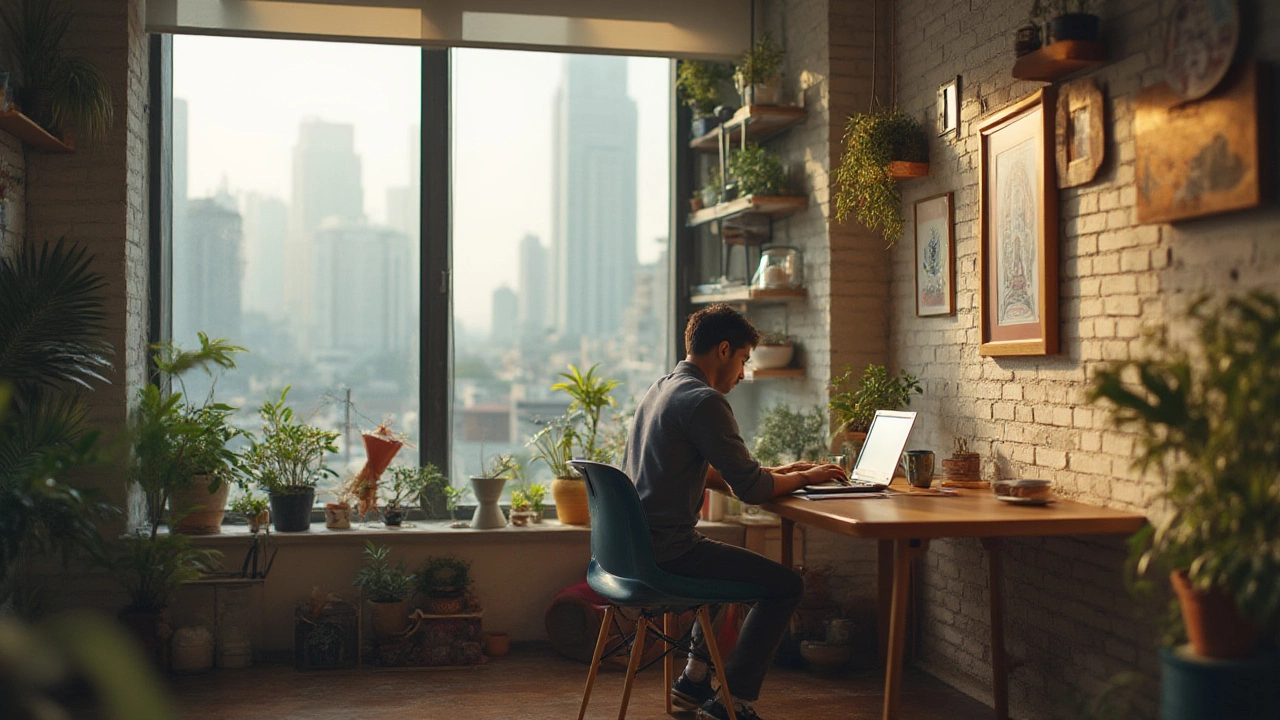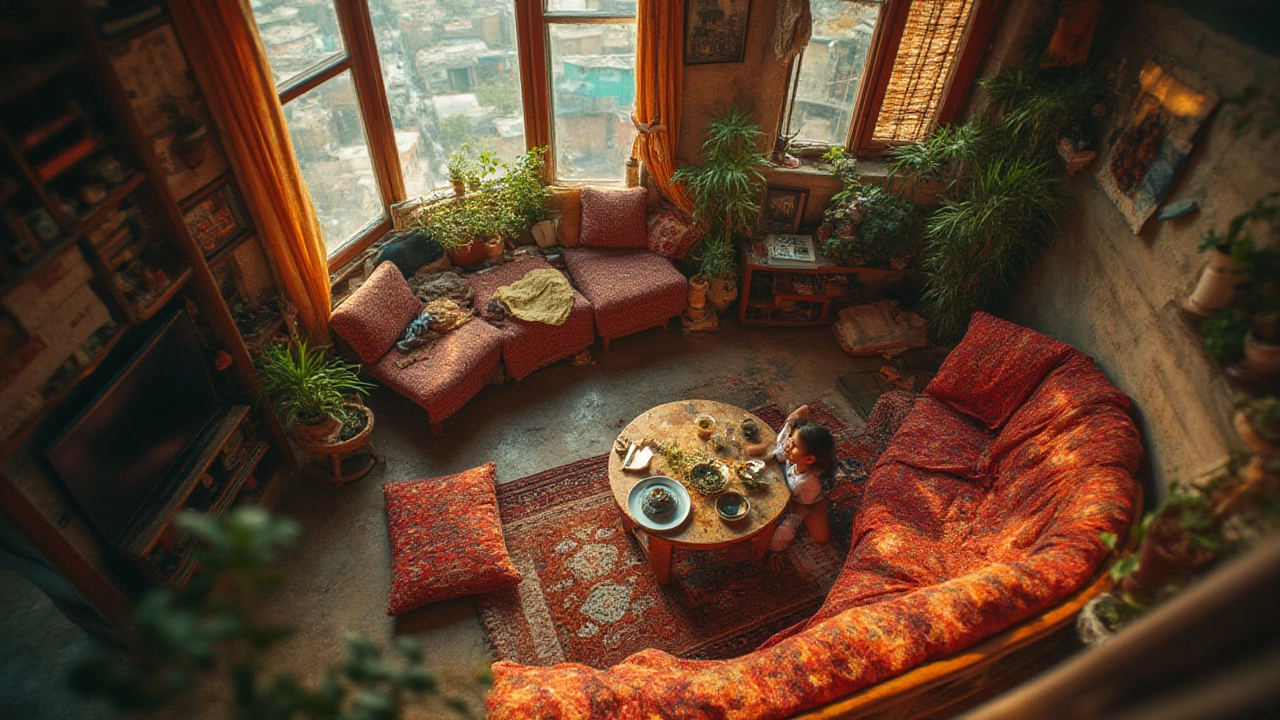Picture walking into an apartment hardly larger than your local café’s back room—just 600 square feet. That’s basically about the size of an average two-car garage. For some, this sounds like a shoebox; for others, it’s the dream: low bills, fast cleaning, and a simplicity you just can’t get in a five-bedroom McMansion. The truth is, Melbourne’s rental and housing market has nudged a lot of folks toward micro-living, whether we wanted it or not. So, is 600 square feet actually too small, or is it surprisingly liveable? Let’s unpack the space, culture, and the sharp tricks that help small apartments feel a whole lot bigger than a measuring tape suggests.
What 600 Sq Ft Actually Looks Like
You might be thinking, “How tiny is it, really?” For reference, the average new apartment in Melbourne built since 2015 sits somewhere around 70 square metres, or 753 square feet. So, a 600 sq ft apartment (just under 56 square metres) comes a bit under the city’s modern average—but it’s far from the smallest on offer. In fact, hot global cities like London, Tokyo, and even New York have loads of apartments in the 400-600 sq ft range. If you line up floorplans, you’ll see a 600 sq ft unit often gives you a basic open living area, one separate bedroom, a bathroom, and sometimes even a balcony if you’re lucky.
The way 600 sq ft feels depends a lot on layout. Open plans with combined kitchen and living zones (sometimes called studio or open-plan 1-bedrooms) double the flexibility of your space. Walls and poor placement kill the light and chop up precious square meters, making a small home feel even tighter. Older buildings, especially those built before 2000, can have odd L-shapes or endless hallways bleeding off your usable area. If the windows are small, the space can feel even more pinched. But clever design brings a massive difference: sliding doors, built-in wardrobes, and kitchenettes keep things feeling breezy. It’s not just about the square footage—it’s what you can do with it.
If you’re still unsure how this stacks up to what you know, consider this: a typical suburban hotel room is about 32 sq metres (344 sq ft). So, 600 sq ft is almost double that—enough for a modest one-bed with a living nook, rather than just a bed and a TV. Also, here’s a fun fact for Australians: according to the 2021 Census, single-person households are now the fastest-growing type in Melbourne, with an average private apartment size slowly shrinking as land prices stay high.
Young professionals or solo renters usually find this size pretty comfortable, especially if they value location over sprawling space. For two people—like a couple or even close friends—it takes negotiation and good storage. Throw in pets or kids, and things get much trickier. Space isn’t just about the number; it’s about your lifestyle, daily routine, and how much clutter you bring home.
Pros and Cons of Living in 600 Sq Ft
There’s a very real upside to the compact city apartment—lower rent, easier upkeep, and a lighter environmental impact. Here in Melbourne, average monthly rent for a central 600 sq ft (“small” one-bed) apartment in 2025 sits at around $2,200 AUD, which lands about $500 below the price of a bigger, 85 sq metre place in the same suburb. That sort of savings stacks up over time, especially when you consider utilities, council rates, and heating/cooling bills. The less space you have, the less you clean, heat, and cool—a bonus if you’re mindful about both your wallet and your eco footprint.
And then there’s flexibility. You can move a small apartment on a whim, switch up the look with less money, and downsize your stuff to just what you actually use. Minimalists love it; even Marie Kondo would probably nod in approval. Your Sunday cleaning goes from a two-hour ordeal to a twenty-minute tidy. Plus, when you live near the city centre, public transport and nightlife are often just a stroll away, giving your compact life a social boost.
But there are challenges—no sugar-coating it. It’s easy for a 600 sq ft home to tip from “cosy” to “cramped” once you get careless about clutter. If you work from home or have hobbies that sprawl—think painting, sewing, or at-home gym gear—space gets eaten up fast. Entertaining friends gets complicated once you need seats for more than three people. If you’re sharing the apartment as a couple or roomies, privacy is at a premium. Also, small apartments can feel stuffy and dark if the windows face brick walls or if you’re stuck in a high-density block with little natural light. Bad ventilation and even ordinary Australian summer heat waves can make the apartment resemble an oven, unless there’s a good ceiling fan or split-system air con.
What you rarely hear about: noise. Smaller apartments hear more from neighbours, and if your living area backs onto a busy street, late-night tram bells or the click-clack of heels on footpaths might become your new lullaby. You might need to get creative with privacy dividers, white-noise machines, or really good headphones.
| Type | Average Size (sq ft) | Median Monthly Rent (AUD) |
|---|---|---|
| Studio | 370 | $1,750 |
| 600 sq ft 1-Bedroom | 600 | $2,200 |
| Standard 2-Bedroom | 850 | $2,850 |
So the 600 sq ft apartment isn’t objectively “too small”—but it doesn’t suit everyone. If you’re the type who hates clutter, doesn’t host massive dinners, and values location over luxury, you might really thrive. If you need space to spread out, or crave peace and quiet, you might hit your limits fast.

Smart Tips for Making 600 Sq Ft Feel Big
Making a compact home actually feel liveable is a blend of smart design, ruthless decluttering, and maybe just a dash of psychological adjustment. Melbourne’s interior design crowd has turned tiny-space miracles into an art form. If you’re diving into 600 sq ft, there are clear moves that make the space work harder for you.
- Furniture that multitasks: Ottomans with storage, beds with drawers underneath, and fold-out couches slash the need for big clunky furniture. Drop-leaf dining tables stay skinny through the week, expanding only on pizza-and-wine nights with mates.
- Go vertical: Tall bookshelves, wall-mounted cabinets, and even hooks for bikes and hats keep the floor freeing feeling. Open shelving in kitchens replaces bulky cabinets and lets you show off your best ceramics.
- Declutter with intent: The “one in, one out” rule is gospel: get something new, ditch something old. If you don’t use it monthly, boot it to storage or offer it to a mate. Minimalism is more than a trend here—it’s about not tripping over your own stuff.
- Use light and mirrors: Light wall paint, glossy splashbacks, and slim built-ins make dim spaces stretch. Placing a large mirror opposite a window does an instant double-up on brightness and depth.
- Zone your living: Rugs, bookshelves, or even plants can divide the living room from a “work-from-home” niche or a little reading corner. Flexible LED strip lighting marks out different moods without eating into your already limited space.
- Keep the air moving: Good airflow changes everything, especially in Australian summers. Floor or ceiling fans eat less power than air con (and keep bills low), and openable high windows avoid that humid, stuffy feeling.
For renters, peel-and-stick solutions work for quick changes—wallpaper, modular shelving, even magnetic spice racks. If you’re an owner and can renovate, sliding doors or even half-walls between living and sleeping spaces opens up options for flexible use.
Another smart move: get social outside. Use local parks, co-working lounges, or communal apartment terraces as your second living rooms. Plenty of buildings in Southbank or Fitzroy now offer rooftop BBQs, shared gyms, or even media rooms—effectively making your “small” apartment feel a lot bigger because the city itself is your extended home.
If pets are in the picture, opt for smaller breeds or rescue cats—many medium-to-large dogs won’t thrive in compact spaces unless you’re super diligent about outdoor walks twice daily. The City of Melbourne’s own data shows a rise in “urban dog ownership,” but with tight space, you have to be honest about both your animal’s needs and your own tolerance for muddy pawprints by the front door.
Is 600 Sq Ft Enough for You? Lifestyle and Future-Proofing
This is where it gets personal. No two people approach small space living the same way. If you’re young, single, and love being out and about, 600 sq ft can feel just right—a home base instead of a home fortress. Some of Melbourne’s best micro-apartments are hot property precisely because they sit steps from tram lines, late-night ramen bars, and job hubs. You’re not holed up in suburbia; you’re in the centre of the action. For career starters or digital nomads, it’s almost liberation—less tying you down, more cash in your pocket for festivals, travel, or an epic winter coat.
But if you plan long-term—partner, pet, remote work, or even a baby—think twice. You might outgrow the compact lifestyle faster than you expect. Repeated studies, like the ABC’s 2023 Australian Housing Survey, note the “churn” of renters out of micro-apartments as life needs change. People move for more room, especially when hybrid working sticks around. Even if you like tight spaces, it’s smart to keep an eye on nearby storage options or apartment complexes offering shared workspaces and gyms. That gives you the flexibility when your situation shifts.
Melbourne’s city council and private developers seem to spot the appeal of compact living. There’s a slow drift, visible even in rental listings, toward smaller, simpler homes—because the market wants affordable, central, low-upkeep pads. But there’s also a backlash happening against “dog box” apartments with no natural light or ventilation. Fair work and building standards now push for minimum daylight, fresh air, and balcony space for even the smallest new builds. If you’re buying, check an apartment’s history for compliance with “Apartment Design Standards” introduced by the Victorian Government since 2021. They’re supposed to keep developers honest about minimum sizes, ceiling heights, and daylight—details that make small apartments actually liveable.
Another thing: add up “hidden” lifestyle costs before you decide on a 600 sq ft pad. If you’re stashing half your winter clothes at your parents’ place, or your spare bike in a friend’s shed, those are trade-offs. If you end up ducking out to a coworking café every day just for space or quiet, factor in that bill too. Sometimes cheap rents mask costs that creep up elsewhere. Ask current renters or neighbours what daily life is actually like—what works and what drives them mad. This is way better than relying on Insta-perfect apartment pics staged without anyone’s actual shoes lined up at the door.
Bottom line: in a tough housing market, 600 sq ft can mean freedom or frustration. It’s all about how you live, what you value, and if you can make every square metre earn its keep. Shoebox, sanctuary, or starter home—it really comes down to your story, your stuff, and how much city pulse you want at your doorstep.
